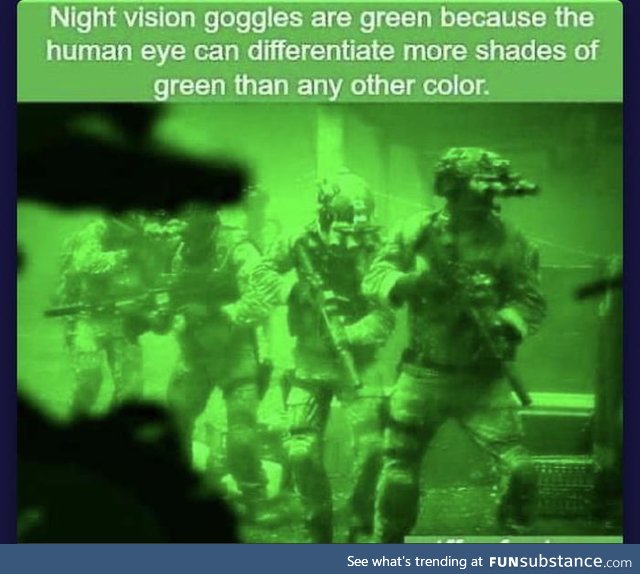Featured Posts

I wish I had a fort

The powerof positive thinking

NASA

Pray for Australia

Take care of each other

She has emerged

My soul feels so much better

I just ordered one. #Just2019HispanicThings

He really wanted his photo at the Halloween party, but was super scared of the spiders

The Only Thing More Contagious Than COVID19 Might Be This Fox's Smile
About
FAQ
Contact
Rules
Terms
Privacy
Feedback
Keyboard Shortcuts:
Previous Post · Next Post · + CTRL Skip Post
Previous Post · Next Post · + CTRL Skip Post
© 2026 FunSubstance · funny and entertaining pictures, memes, gifs & videos.



1. The comes for green are not just more numerous- but in a very optimal place in the structure of the eye in relation to the pupil.
2. Green- in general- is less straining on the eyes or CNS to process for long periods.